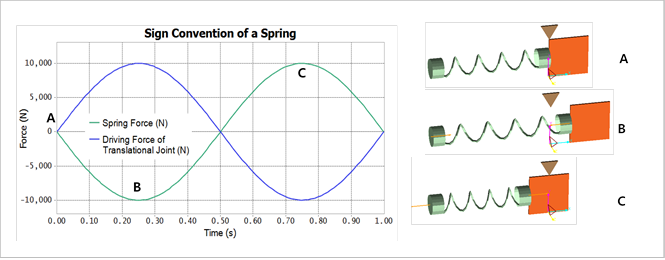
It can be confused to understand the sign convention of the spring forces. A simple model is selected to explain the sign convention. Figure 1 shows a simple model that consists of an orange block that slides horizontally. As the block slides, the spring is first stretched and then compressed as a translational joint with a motion input moves the block. The force exerted by the translational joint motion driver is given by the blue curve. The force in the spring is shown as the green curve. Note that there is no pre-load in the spring.

Figure 1 Sign Convention for a Spring Express with a Simple Model
Therefore when the spring is stretched or extended from its free length it will exert a negative force between the connected bodies. Likewise when the spring is compressed it will exert a positive force.
Another way of looking at the sign convention is that when the starting force of a spring is positive it will push apart the two connected bodies. Likewise if the starting force of a spring is negative it will pull together the two connected bodies.
The sign convention of the damping force in the spring is that the damping force always opposes the separation velocity between the two end points of the spring. If the spring is increasing in length then the damping force will push to try to decrease the spring length. Likewise if the spring is decreasing in length then the damping force will push to try to increase the spring length.